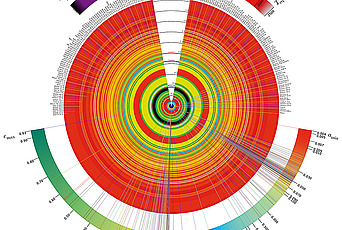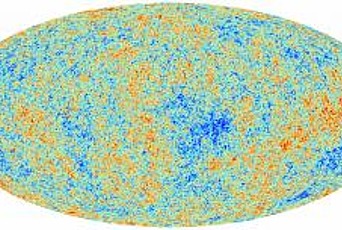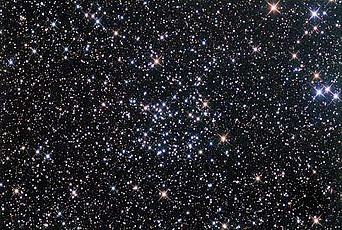What Causes Supernovae Explosions?

On the evening of November 11, 1572, twenty-six-year-old astronomer Tycho Brahe was about to make a discovery that would change his life and consequentially boost the scientific revolution significantly. While casually staring at the night sky, he suddenly noticed a very bright unfamiliar star in the Cassiopeia constellation. The star, which was as bright as Venus, was located in the inner parts of the famous W-shaped constellation, which was well known to many common people, let alone astronomers. What Tycho saw looked like the appearance of a new star (nova stella). He was so astonished that he sought the confirmation of others to assure himself that he was not hallucinating.
Unknown to Tycho, such new stars had appeared during the previous centuries (“guest stars” in Chinese records), with a much brighter star reported in 1006. While these events were very important to astrologers, they had no lasting effect on astronomical thinking at the time. Tycho, however, realized that such an event was revolutionary. By accurately and repeatedly measuring the position of the “nova,” Tycho showed that it was much further than the moon. In one night, Tycho managed to scientifically falsify the millennia-old Aristotelian belief that anything beyond the sphere of the moon cannot change. This convinced Tycho that the “known” cosmology was wrong and motivated him to devote his life to performing measurements of stars and planets to study the “true” cosmology. His hard, lifelong work paid off. His careful measurements of the positions of the planets enabled the discovery of the law of gravity by Johannes Kepler and Isaac Newton. Kepler would later say that if Tycho’s star did nothing else, it produced a great astronomer. Yet, even Tycho and Kepler could not have appreciated that what seemed like a new star was actually an explosion of unimaginable power and that such explosions are crucial for our existence.
Tycho’s “nova” faded from sight about eighteen months after its discovery. However, modern instruments reveal a spectacular sight at the position recorded by Tycho. Observations of the same spot in the sky by NASA’s Chandra X-ray observatory, nearly five centuries later, show material expanding with velocities of thousands of kilometers per second with a mass of a few billion billion billion tons, comparable to that of the Sun. Tycho had evidenced a powerful explosion, which we now term “supernova.” The huge amount of energy released in a few months is equivalent to the output of a few billion billion billion H-bombs. At the current rate of emission, it would take our Sun several billion years, of order of its lifetime, to release the same amount of energy. This phenomenon turned out to be very rare, occurring roughly once per century within a galaxy like our own. While supernovae have not been detected in the Milky Way during the last three centuries, modern technology has allowed thousands of supernovae to be detected in other galaxies. Supernovae are not just beautiful cosmic fireworks—many of the elements that are essential for life, such as calcium and iron, are believed to have been produced by supernovae.
But what causes these explosions? There are currently two explanations involving theoretical mechanisms that are related to the two ways in which stars die. Stars cannot shine forever for the simple reason that their energy supply—nuclear burning—is finite. What happens to stars once they exhaust their nuclear fuel (mainly hydrogen) is believed to depend crucially on their mass. One of the most important theoretical discoveries in astrophysics is that a critical mass exists above which stars cannot sustain themselves against their own gravitational pull without a continuous supply of energy. The two types of star endings depend on whether their mass is above or below this critical mass, which is called the Chandrasekhar mass limit, named after Subrahmanyan Chandrasekhar (Member, 1941, 1976), one of its discoverers. If, by the time a star exhausts its fuel, it has a mass greater than this limit, the core of the star cannot sustain itself and collapses. A huge amount of energy is released when the core collapses to the tiny size of a few kilometers, becoming a black hole or a neutron star. While most of this energy is emitted in invisible neutrinos, a small fraction of this energy ejects the outer parts of the star, creating an explosion sufficient to produce a supernova. Such a theoretical event is called a core-collapse supernova.
Stars that are less massive than the Chandrasekhar mass limit, or lose enough mass during their life to become so, are able to resist gravity once their nuclear fuel is exhausted. Gravity does manage to shrink them considerably, however, and they settle at a radius of a few thousand kilometers. Such dense stars, with a mass comparable to that of the Sun (one million times the mass of Earth) and a size comparable to that of Earth, are called white dwarfs. These stars are abundant and have been extensively studied observationally and theoretically. Without their previous nuclear energy supply, white dwarfs slowly become dimmer and eventually become unobservable. While white dwarfs are stable, their exceptional high density make them very powerful thermonuclear bombs. If properly ignited, white dwarfs are capable of powerful thermonuclear explosions with a sufficient energy release to account for a supernova. Such theoretical events are called thermonuclear supernovae. An appealing aspect of theories involving nuclear energy is that they naturally explain why the energy-per-unit mass released by supernovae is comparable to that of H-bombs and our Sun. Yet neither core collapse in massive stars nor thermonuclear explosions of white dwarfs have been theoretically established to account for the supernovae that we see. While core collapse is likely inevitable, it has not been shown that the outer parts can be ejected successfully. While white dwarfs can explode if ignited, a robust ignition mechanism has not been identified. Yet the two explosion mechanisms are widely believed to occur, based on several successes for explaining supernovae observations and given that we simply do not have better ideas.
Perhaps the best clues for identifying an explosion mechanism have come from a few nearby supernovae where a star, located in pre-explosion images at the precise position of the supernovae, had disappeared in images taken after the supernova had faded away. In all of these cases, the exploding star was massive and at a late stage of its life in accordance with the core-collapse theory. This scenario was confirmed for the famous supernova that exploded in the Large Magellanic Cloud galaxy in 1987—the closest among these supernovae—in which the predicted neutrino burst was detected.
However, core collapse of massive stars cannot account for all of the supernovae. A significant fraction of supernovae occur in elliptical galaxies where massive stars simply do not exist. These massive stars have lifetimes of only millions of years and have long died in elliptical galaxies where stars have ceased forming for billions of years. Interestingly, it turns out that all supernovae that occur in such old stellar environments seem to share many distinctive emission properties, belonging to a separable class called type Ia. These supernovae are distinct by not showing any trace of hydrogen and helium, the most abundant elements in the universe, but exhibiting significant abundance of much heavier elements such as silicon, nickel, and iron. These features are naturally explained if these supernovae are the thermonuclear explosions of white dwarfs, which are abundant in all stellar environments, including elliptical galaxies, and are predominantly made of carbon and oxygen rather than hydrogen and helium. Perhaps the strongest piece of evidence in this direction is the huge amount—a considerable fraction of the ejected materials—of the unstable isotope Ni56 detected in these supernovae, which is an expected outcome of a thermonuclear explosion. In fact, given the short lifetime of a few days, this isotope must have formed in the explosion itself, favoring a nuclear origin. While type Ia are the only supernovae known to occur in elliptical galaxies, they are observed to occur in all stellar environments, including spiral galaxies like our own. In particular, the supernova observed by Tycho, which occurred in our own galaxy, was a type Ia supernova. Although observations of type Ia supernovae are compatible with explosions of white dwarfs, they do not provide any hint as to why some white dwarfs suddenly explode.
Before we address the mystery behind the sudden explosion of white dwarfs, it is worth mentioning the importance of the resulting type Ia supernovae. The large amounts of Ni56 that are observed in these supernovae decay to Co56 and then to iron. Type Ia supernovae are the most efficient known production sites of iron. A significant amount of the iron in the universe, including a large fraction of Earth’s mass and the iron in your blood, was produced in such supernovae. In addition, type Ia supernovae have turned out to be very useful tools for measuring fundamental properties of the observable universe. Among the wide variety of supernovae, type Ia are the brightest and comprise a relatively homogeneous group. Their high brightness allows them to be detected clearly across the observable universe. Their homogeneity allows a calibration of their intrinsic luminosity, which enables their distance to be measured. An object with a given intrinsic luminosity appears dimmer when it is more distant and brighter when it is closer, allowing a determination of its distance based on the measurement of its apparent brightness. Astrophysical objects with known intrinsic luminosity are rare and precious, and type Ia supernovae are one of the few such “standard candles” that can be seen from cosmological distances. In recent years, distances across the observable universe that were measured using type Ia supernovae led to the surprising conclusion that the expansion of the universe is accelerating, prompting fundamental modifications to the Big Bang cosmological model. The 2011 Nobel Prize in Physics was awarded to three astronomers due to this application of type Ia supernovae. The growing importance of the use of type Ia as accurate rulers for cosmological distance has strengthened the need for a firm theoretical understanding of these explosions.
This brings us back to the pressing issue of why some white dwarfs explode (about 1 percent of white dwarfs account for type Ia supernovae). During the last several decades, the standard lore has centered on increasing the mass of these white dwarfs toward the unstable Chandrasekhar limit where an explosion is assumed to occur. In the most popular scenarios, the mass of some white dwarfs grows with time, due to material deposited by a nearby companion. Despite its popularity, this scenario has never been convincingly shown to lead to an explosion, and there is observational evidence that there are not enough relevant systems to account for the rate of type Ia supernovae even if they were to explode. Also lacking an explanation is the amount of Ni56, which varies by about an order of magnitude between the faintest and brightest type Ia supernovae. While the shortcomings of this Chandrasekhar model have been presented in many recent papers and reviews, it remained popular mostly due to the fact that there were no other good alternative suggestions.
We now believe we have found the solution to this problem: type Ia supernovae occur when two white dwarfs directly collide with each other. The explosion is triggered by the shock waves that result from the collision, which occurs at velocities of thousands of kilometers per second due to the gravitational pull of the white dwarfs. Such collisions lead to successful explosions over a wide range of white dwarf masses and produce the right range of Ni56 masses seen in type Ia supernovae. They have nothing to do with the Chandrasekhar mass. While it was known that such collisions could lead to explosions, it was never regarded as a possible explanation for type Ia supernovae since it was believed that such collisions were very rare. A very small rate was thought to occur in dense stellar systems, with less than 1 percent of all type Ia supernovae possibly resulting from such collisions.
In a paper published last year by Members Boaz Katz and Subo Dong, it was argued that the rate of collisions actually may be as high as the total rate of type Ia supernovae. The argument was based on the fact that most stars are observed to start their life in small groups of three or more. It was shown that collisions are likely in triple systems, consisting of two white dwarfs orbited by a third star, due to the three-body gravitational interaction between them. The rate of such collisions can reach the rate of Ia supernovae if a few tens of percent of stars remain in triple systems when they become white dwarfs, a quite reasonable assumption. That type Ia supernovae are the result of common collisions in triple systems seems like a highly unlikely explanation at first thought. Given the small size of white dwarfs, the chance of a collision at any given passage is roughly one in a million. But numerical calculations by Katz and Dong showed that a few percent of these systems lead to a collision. The key is that the systems have billions of years to spare, during which the white dwarfs experience millions of passages. Due to the subtle yet persistent pulls from the distant third star, each passage of the two white dwarfs occurs at a slightly different configuration and, after a million passages, the chance for a collision becomes significant.
In a combined effort led by Member Doron Kushnir with Katz, Dong, Member Rodrigo Fernandez, and Eli Livne of Hebrew University, the detailed process of white dwarf collisions was calculated and shown to reproduce several features of the broad distribution of type Ia supernovae. For the first time since their discovery by Tycho more than four centuries ago, a detailed scenario for a significant fraction of supernovae was studied in which the explosions could be numerically calculated from first principles based on the physically well understood processes of Newtonian dynamics, hydrodynamics, and thermonuclear burning. In a paper published by our group, the model was shown to successfully pass three independent and robust observational tests, including the successful recovery of the wide distribution of Ni56 masses. It is thus very likely that what Tycho thought was the sudden birth of a new star was actually the violent death of two. He might have been gratified to learn that the two stars collided due to the application of the same law of gravity that would later be deduced based on his dedicated observations.


